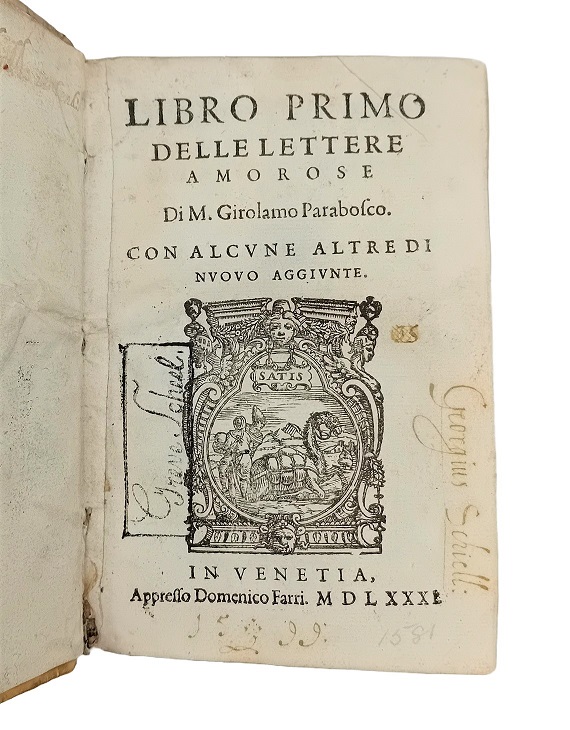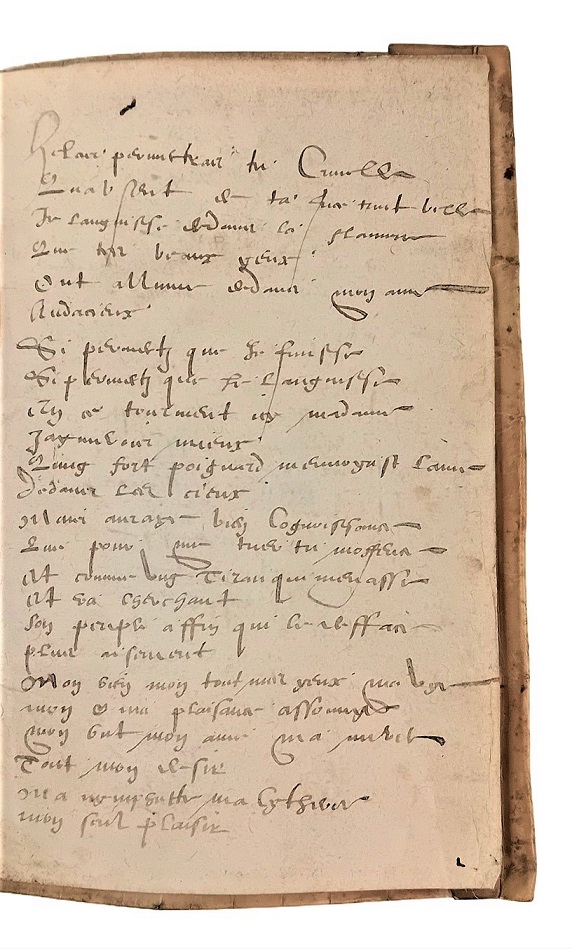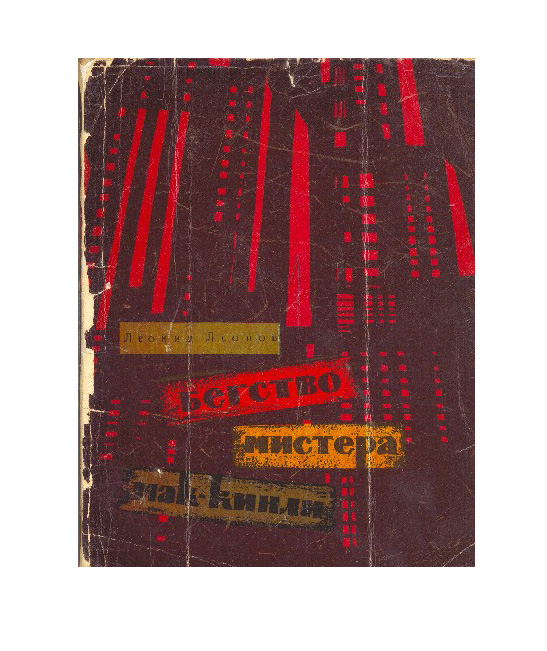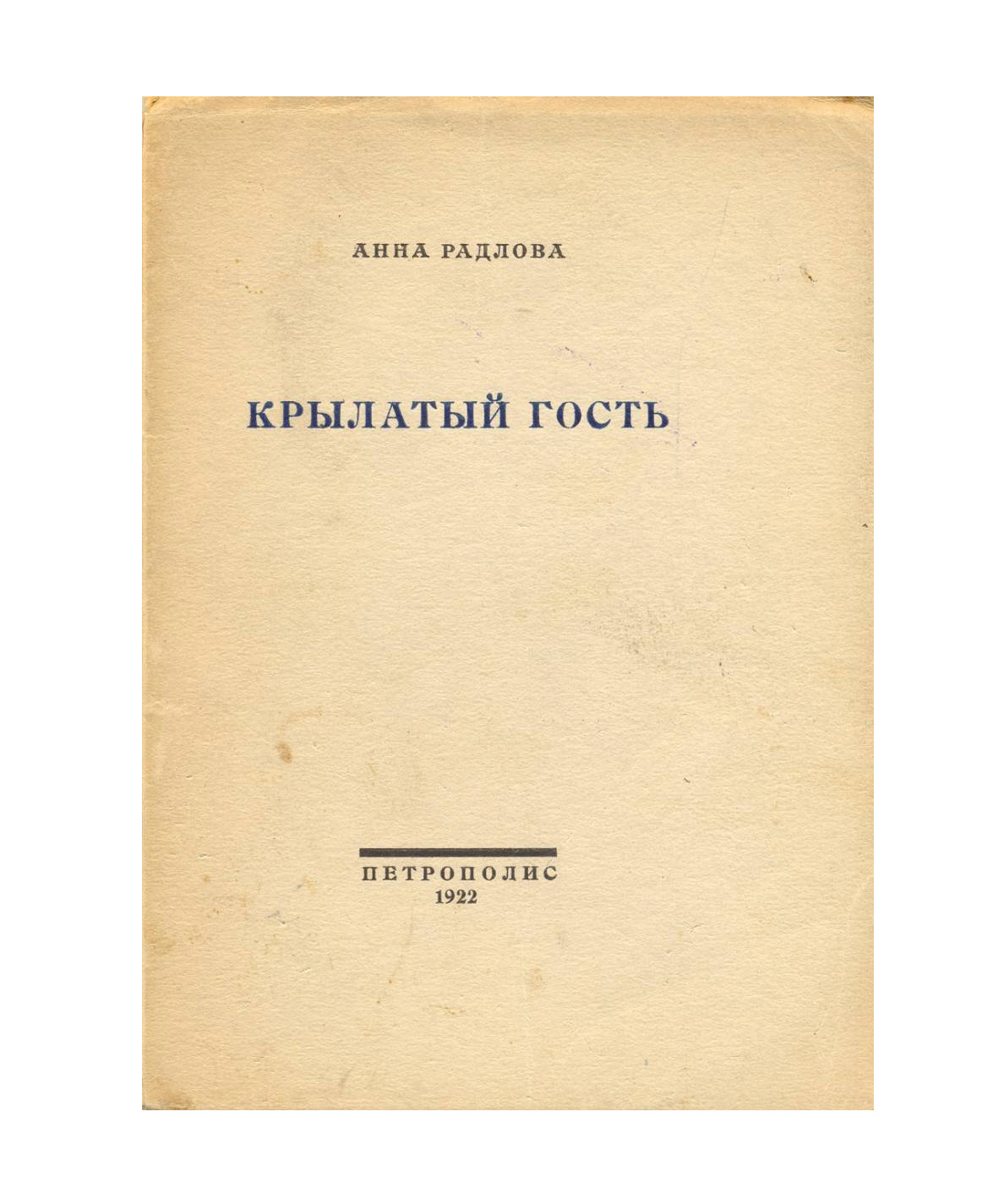

LOVE LETTERS AND LITERARY VENTRILOQUISM
FROM THE LIBRARY OF TYCHO BRAHE'S NEPHEW
PARABOSCO, Girolamo.
Libro primo [- quarto] delle lettere amorose di M. Girolamo Parabosco. Con alcune altre di nuovo aggiunte.
Venice, Domenico Farri, 1581.
Four parts in one vol., 8vo, ff. 71, [1 (blank)]; 48; 55, [1 (blank)]; 96; signatures continuous, text in italic, separate title-pages to each book with woodcut device, woodcut initials; occasional light marks; very good in contemporary limp vellum with yapp edges and remains of green ties; staining to upper cover, some creasing and light wear; stamp of ‘Greve Scheel’ and 1599 ownership inscription ‘Georgius Schiell’ to title-page, 3 French love poems in a near-contemporary hand to rear free endpaper totalling 54 lines (‘Helas permetras tu’, ‘Amour ma pris par la ficelle’, ‘Odieux qui du pourpris celeste’), French love verse in another near-contemporary hand to front endpapers, totalling 23 lines, later ownership inscription ‘Jehan’ to front free endpaper, crossed out in ink.

Added to your basket:
Libro primo [- quarto] delle lettere amorose di M. Girolamo Parabosco. Con alcune altre di nuovo aggiunte.
Uncommon collected edition of Girolamo Parabosco’s (1524–1557) immensely popular letters to anonymous lovers, literary contemporaries, and a courtesan, with several letters written from a female point of view, this copy formerly in the possession of Tycho Brahe’s nephew and with several manuscript love poems.
The sixteenth century saw an exponential increase in the demand for vernacular collections of letters, particularly for material that reflected women’s voices. Parabosco’s impersonation of the authentic female perspective in his ‘lettere scritte per donne’ (vol. I, ff. 52v-58v; vol. III, ff. 17v-18r, ff. 32v-33r) is perhaps born of a desire to capitalise upon the ‘demand for women’s letters that was not being fully met, given that women still published in far smaller numbers than men’ (Ray, p. 14).
Addressed to anonymous male interlocutors, the letters present female authors characterised by lovesickness and passion: ‘I languish for you, my sweet lord … even if your beauty is matched only by your cruelty’ (vol. IV, ff. 5v-6r, trans.). The letters included in vol. IV are followed by Parabosco’s responses in order to display his mastery of the epistolary genre. His letters epitomise the seeming effortlessness prized by readers and writers of lettere familiari alike: as contemporary writer Lucrezia Gonzaga writes, his letters are neither ‘clothed in artifice, nor puffed up from excessive revision, but rather speak plainly’ (Ray, p. 3, trans.). Indeed, Parabosco’s Lettere amorose were among the most popular anthologies of letters of his time, volume I alone having been reprinted thirty-two times between 1541 and 1617. They seem to have been affected neither by the 1580 condemnation of love letters by the Index of Parma, nor of anonymous love letters by the Index of Sixtus V in 1590 (ibid., p. 231).
Provenance: with the stamp and 1599 ownership inscription of Georg Schiell (i.e. Jørgen Christiensen Skeel, 1578–1631). The nephew of Tycho Brahe, Skeel was named head of Denmark’s military (Rigsmarsk) in 1627, the highest office in the realm after the king’s deputy and chancellor (Dansk Biografisk Leksikon). Brahe had arranged for Skeel’s older brother, Albret, to study at the University of Padua in 1590; Jørgen followed in Albret’s footsteps shortly afterwards, studying civil affairs at the universities of Strasbourg (1590-92), Orleans (1596), and Padua (1597), additionally stopping at Venice and Naples before returning to Denmark in 1598. The present copy, dated only a year later, is perhaps a souvenir of his studies in Italy.
Adams P255; BM STC Italian, p. 489. See M.K. Ray, Writing Gender in Women’s Letter Collections of the Italian Renaissance (2009), and, on Skeel, Historia scholae cathedralis Arhusiensis (1817), pp. 90-91.

